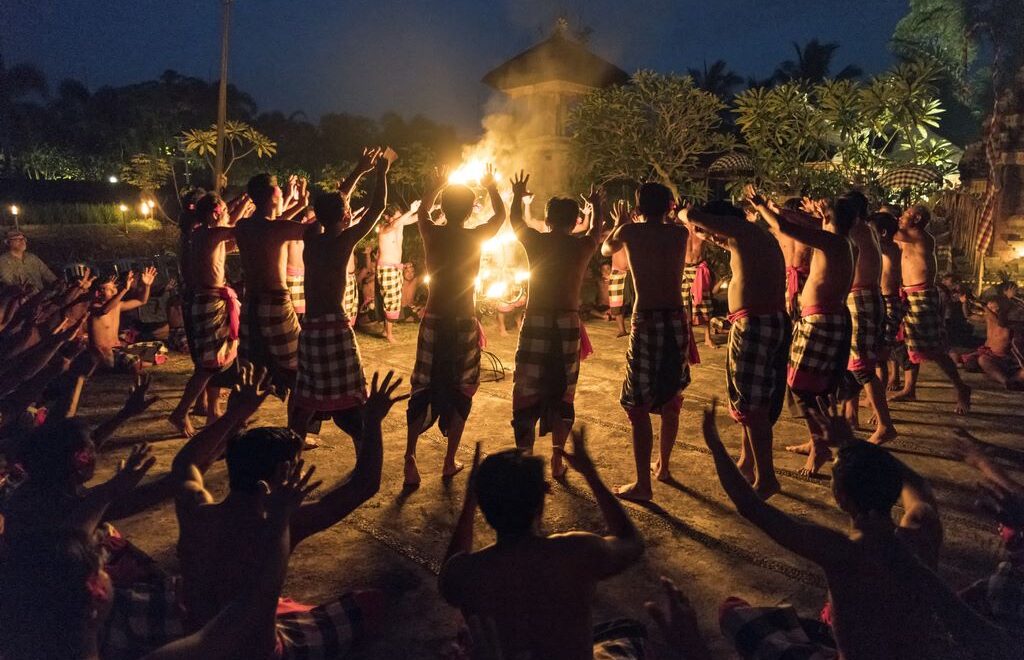
As part of the Year of Brazil, the Franciscaines de Deauville are devoting a monumental retrospective to the work of the celebrated Brazilian photographer Sebastião Salgado. A selection of 166 of his most beautiful images taken in the four corners of the world, black and white images of incredible power and profound humanism. The Maison Européenne de la Photographie, which has been following and preserving his work since the 1980s, has loaned his historic prints and is curating the exhibition.

Born in 1944 in Aimorés, Brazil, Sebastião Salgado joined the International Coffee Organisation after studying economics. His assignments took him to the four corners of the globe, where he discovered photography, a passion that would become his vocation. In 1969, following the military coup and the hardening of the dictatorship, he fled Brazil with his wife Lélia Wanick Salgado. They found refuge in Paris in 1973, the year he left his job to devote himself fully to his art. He began by working for well-known agencies such as Sygma, Gamma and Magnum, before founding the Amazonas Images agency with his wife. From 1977 to 1984, Salgado travelled throughout Latin America, from the torrid Nordeste region of Brazil to the mountains of Chile, from Colombia to Mexico, sharing the lives of isolated communities for long weeks at a time. This was the inspiration for his first book, Other Americas.
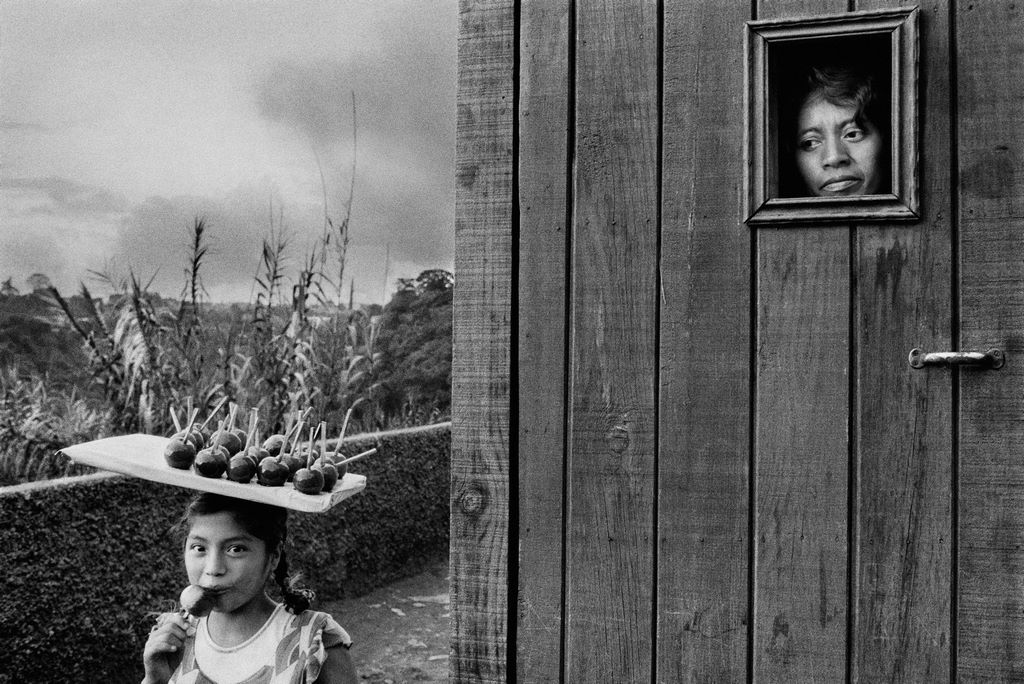
Ciudad, Guatemala, 1978. © Sebastião Salgado.
He then went on to document the plight of immigrant workers in Europe and the ravages of drought and famine in Africa (1984-1985), particularly in the Sahel, Sudan and Tigray.
He then embarked on a series of vast photographic frescoes. This was followed by Exodus (1994-1999), where he documented the vast migratory movements that are upsetting the balance of our planet.
Plagued by the horrors he had seen, by his close contact with misery and suffering in the course of his many reports, Salgado went through a dark period of doubt and melancholy. He would say that the genocide of the Tutsis in Rwanda in 1994 gave him "ashamed to belong to the human race". Salgado then gave up photography and took over his family's farm in Brazil with his wife Lélia. In 1998, the couple began planting thousands of trees (3.4 million to date, the largest environmental project in the country) to combat the massive deforestation of the Amazon, reforesting over 600 hectares. A feat immortalised by Wim Wenders in his documentary film Salt of the earth. This experience gave him a new energy. "It made me want to get back into photography. That's how Genesis was born, a project that enabled us to discover everything that hasn't been destroyed ecologically," he says.
Humanity at the heart of his work

The first part of the exhibition retraces the journey of a committed photographer who has confronted the torments of humanity. His images highlight the major changes of our time, affecting the most vulnerable populations, suffering from conflict and poverty, as well as the tragic human and environmental consequences of industrial society.
The journey begins with Autres Amériques (1977-1984), his first personal project, in which he captures the essence of Latin America, and shows the persistence of Indian and peasant cultures. He immediately asserted his unique style and his mastery of black and white.
This is followed by large extracts from his second project The Hand of Man (1986-1992), a kind of visual archaeology of an era known to history as the Industrial Revolution. The photos are strikingly realistic, shocking and speak for themselves. Visitors are brought face to face with the stark images for which the photographer was first renowned. A whole world of the damned prey to the violence of the world. In his search for a light that tends towards the sacred, the artist transforms images intended for documentary purposes into works of art, with an aesthetic that is so finely crafted.
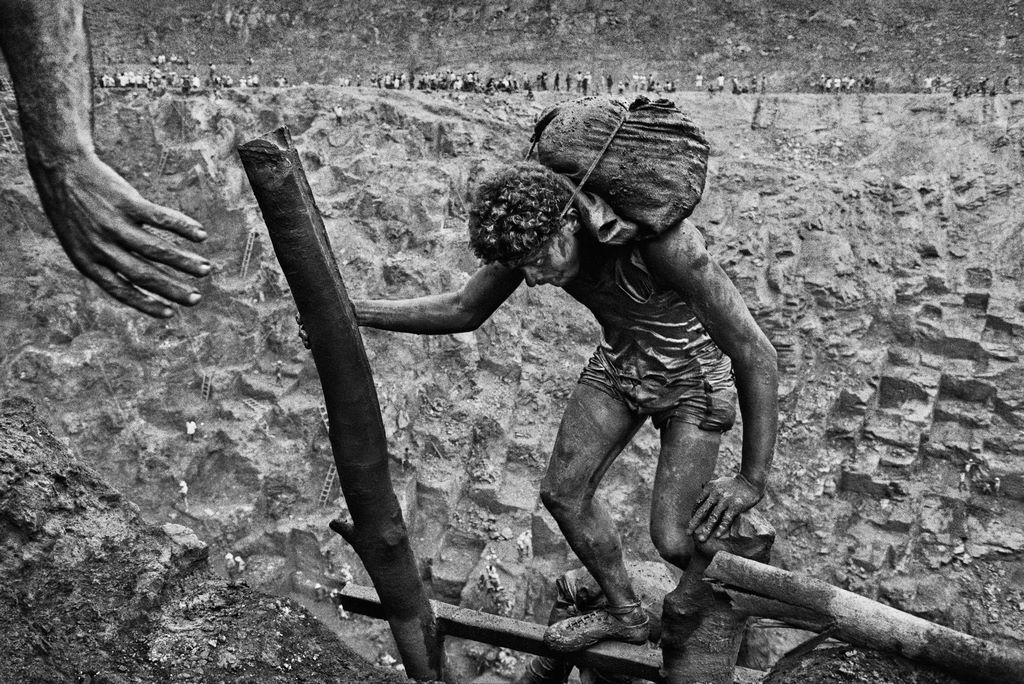
State of Pará, Brazil, 1986. Sebastião Salgado.
A particularly powerful image is that of a gold digger carrying a sack of supposedly gold-bearing mud on his back, risking his life to climb up a frail ladder from the bottom of a huge open-cast mine: the Serra Pelada (now closed), opened in 1979 in the state of Pará, Brazil.
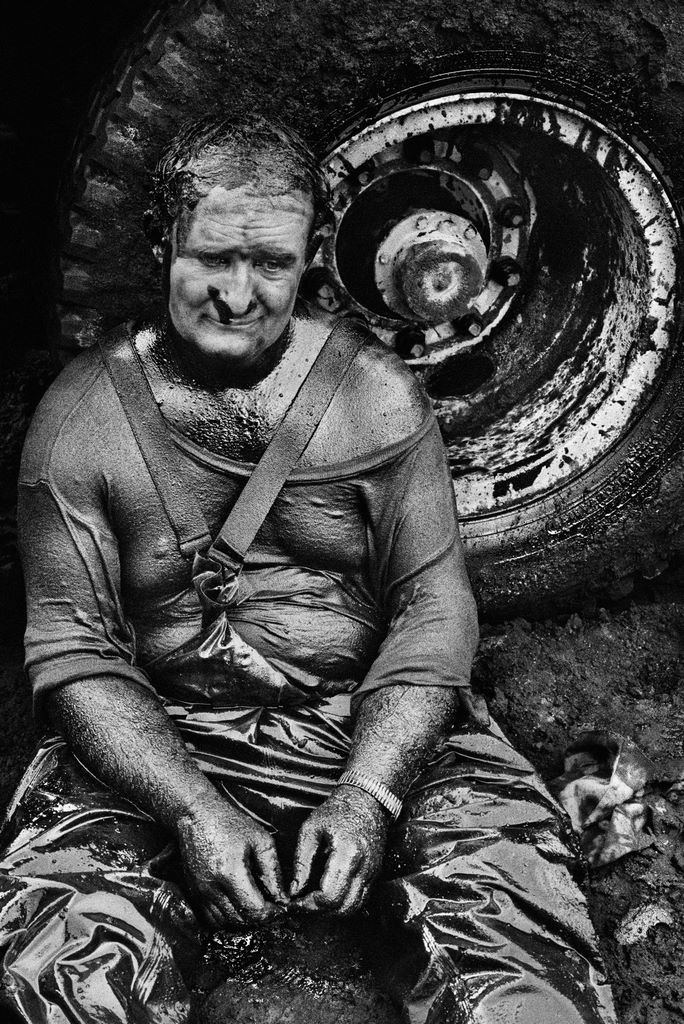
Or in 1991, of an exhausted man, covered in fuel oil, his face completely ruined, as the Gulf War ended in Kuwait and men tried to put out the burning oil wells. "It was sublime and terrible. They were risking their lives. When the water was spilt, there were deadly gas explosions. The noise was so loud, it was like working in a jet turbine. I lost half my hearing", says Salgado.
Exoduses
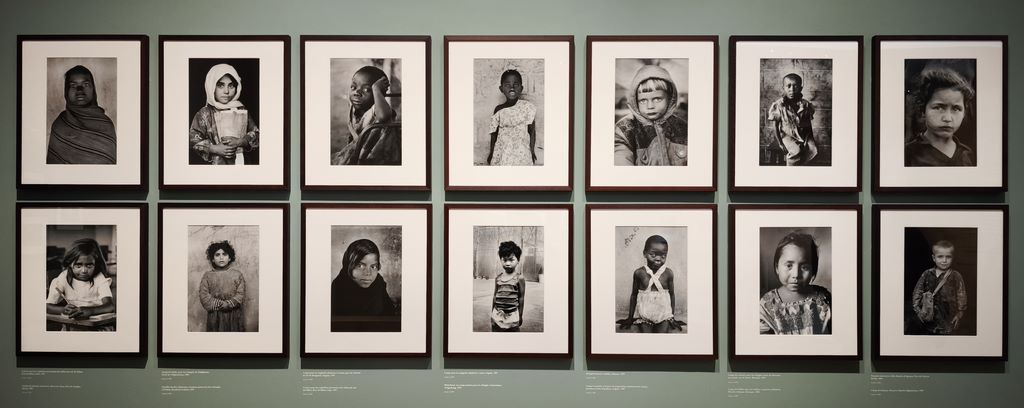
Exoduses, (1994-1999), tells the story of rural-urban migration, economic immigration and refugees fleeing conflict, often ending their journey in overcrowded shanty towns. This project recounts the journey of Latin Americans to the United States, the Vietnamese exodus, displaced Afghan populations, the tragedy of refugees from the former Yugoslavia, Hutu refugees from Rwanda, the movement of landless peasants in Brazil, and the children of the exodus, with a series of moving portraits. "The extras in these photographs are similar to tens of millions of others living in shanty towns, refugee camps and peasant settlements across Latin America, Africa, Asia and Europe. They have been chosen at random, but they are, in isolation, proud individuals who have chosen to be photographed. ".
Genesis: in search of the world of origins
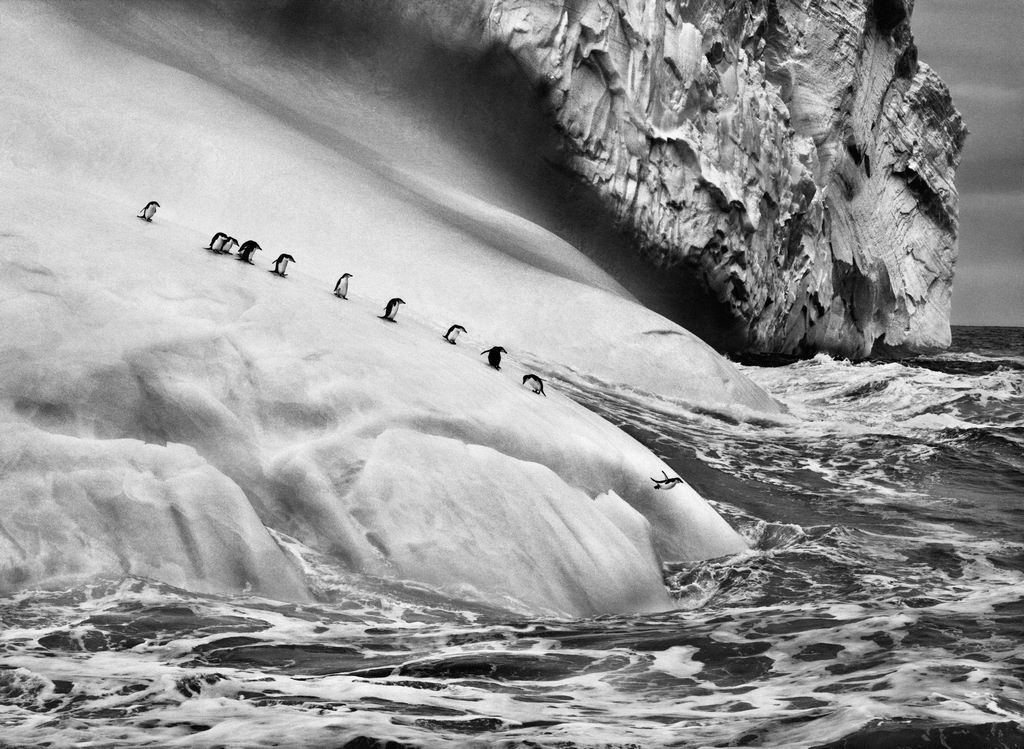
The exhibition concludes with Genesis, a project begun in 2004 that celebrates the territories that have remained untouched by human folly and that it is vital to preserve. Between 2004 and 2012, Salgado made almost thirty-two journeys to the farthest corners of the world, from the Galapagos Islands to Africa, from arid deserts to Arctic ice, via the lush Amazon rainforest and the tribes that inhabit it. This second part of the exhibition reveals the grandiose landscapes and wildlife of the Okavango delta in Botswana and the gorillas of Virunga Park on the borders of Rwanda, Congo and Uganda. Not forgetting the peoples who have escaped the contemporary world: the Himba people of Namibia, the Dinka tribes of Sudan, the San people of the Kalahari desert in Botswana, the Omo tribes of southern Ethiopia and the ancient Christian communities of the north, or the ethnic groups of Papua New Guinea.

Western Highlands Province, Papua New Guinea, 2008. Sebastião Salgado.
Admire this Papuan from Papua New Guinea, who gives us a mischievous look, dressed in the traditional costume of the sing-sing - a local ritual dance inspired by that of the great blue bird of paradise, a magnificent bird.
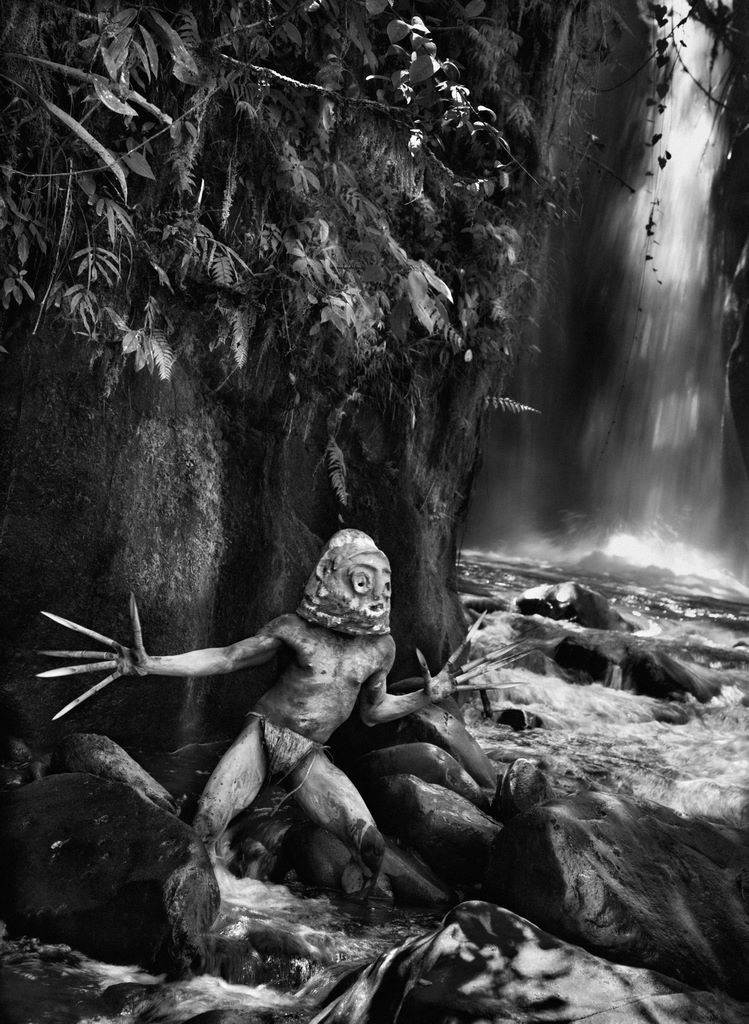
Western Highlands, Papua New Guinea, 2008. Sebastião Salgado.
And what about this mudman ("mud man") from the Asaro tribe wearing a mask made from clay mud and long, claw-like bamboo fingernails.
This immersion in Salgado's artistic and intellectual universe covers more than fifty years of his career. It is the culmination of an exceptional body of work and a life well lived.
Text : Brigitte Postel
Opening photo : Sandrine-Boyer-Engel
This article also appeared on the Natives magazine website https://www.revue-natives.com/art-et-culture/2025/04/deauville-sebastiao-salgado/
"Sebastião Salgado
From 1 March to 1 June 2025
https://lesfranciscaines.fr/fr/programmation/sebastiao-salgado-collection-de-la-mep
The Franciscans
145 b Avenue de la République
14800 Deauville
And in Brusselsanother exhibition by Sebastião Salgado dedicated to the Amazon:

